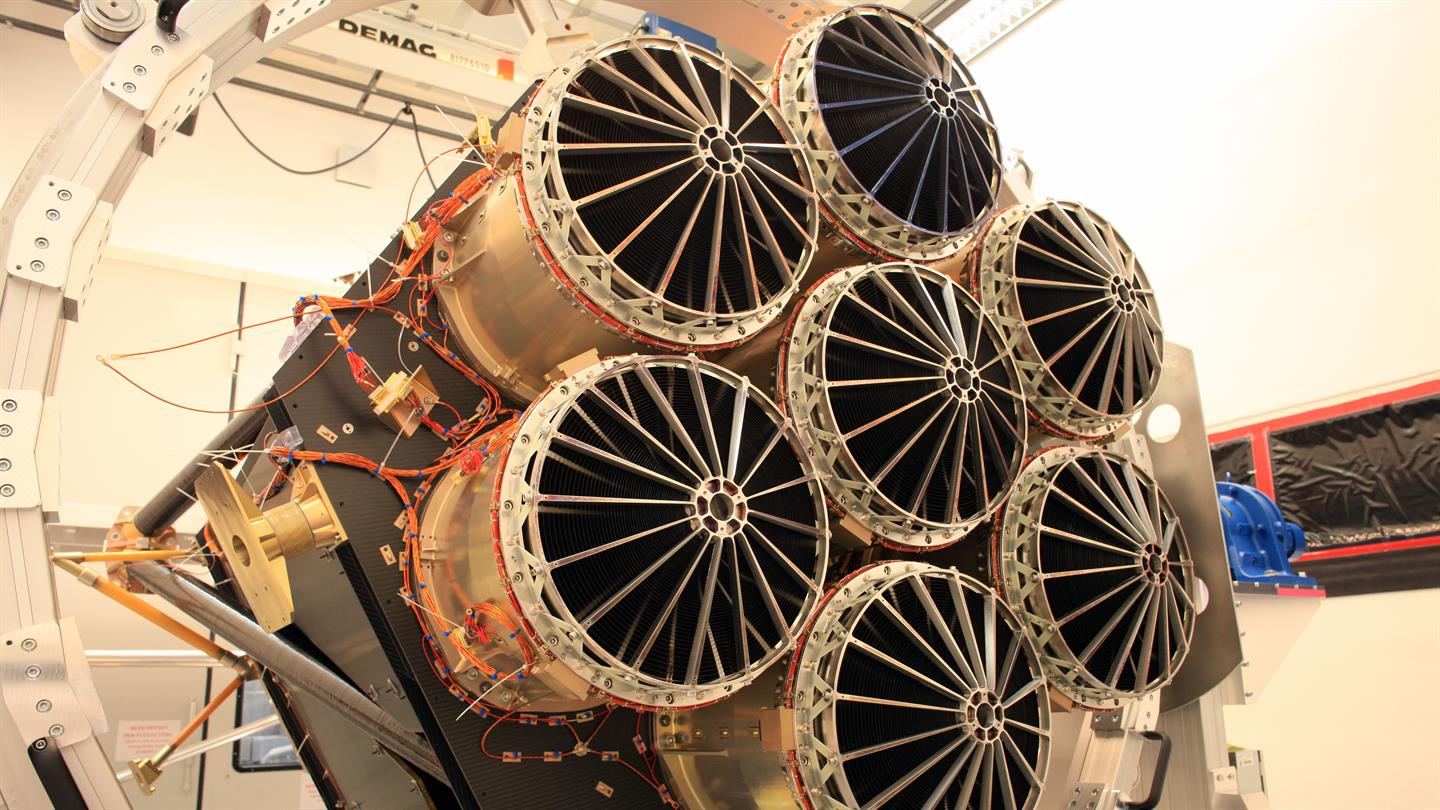X-Ray Telescope Designed for Dark Energy Search Ready to Launch
A German telescope is ready to search for dark energy and other strange things in the universe, launching Saturday (June 22) aboard a Russian rocket.
The telescope is hitching a ride with a parent satellite called Spektrum-Röntgen-Gamma (Spektr-RG) on board a Proton rocket. Blastoff is scheduled for 8:17 a.m. EDT (1217 GMT, 5:17 p.m. local time) from the Baikonur Cosmodrome in Kazakhstan. If all goes well for Russian space agency Roscosmos, Spektr-RG will spend four years surveying the entire sky and then 2.5 years zeroing in on particular cosmic objects. The launch was postponed from Friday (June 21) due to an unnamed issue.
Tucked on board Spektr-RG will be the German space agency (DLR)'s Extended Roentgen Survey with an Imaging Telescope Array (eROSITA) X-ray telescope, which is billed as the best X-ray "eyes" ever to launch on a space telescope.
Related: X-Ray Universe: Amazing Photos by the Chandra X-Ray Observatory

"eROSITA will help researchers gain a better understanding of the structure and development of the universe, and also contribute towards investigations into the mystery of dark energy," Walther Pelzer, executive board member for DLR Space Administration, said in a statement. The DLR worked with the Max Planck Institute for Extraterrestrial Physics to develop eROSITA.
Dark energy is believed to be the force behind the expansion of the universe; scientists discovered in the 1990s that the universe is actually speeding up its expansion as it gets bigger, but why is still poorly understood. One of eROSITA's goals is to find the cause of this acceleration.
Scientists believe dark energy makes up about 68% of the universe, while dark matter — which can only be detected through its effect on other objects — makes up 27%. The remaining 5% of the universe comprises everything we can see with our eyes or telescopic observatories.
Get the Space.com Newsletter
Breaking space news, the latest updates on rocket launches, skywatching events and more!
eROSITA will examine galaxy clusters in hopes of better understanding dark energy's nature. Because galaxy clusters are very hot, the X-rays they emit could allow eROSITA to track how they move and how fast they are traveling.
The German telescope will also examine other "hot" phenomena such as superheated gas from supernovas (star explosions), neutron stars (the star core left over after a supernova explosion) and active galactic nuclei (or galaxies hiding supermassive black holes at their hearts).
The instrument will pan across the sky every six months for four years in order to map X-ray emission throughout the universe, according to DLR. "This will make it possible for eROSITA to produce the largest-ever cosmic catalog of hot objects and thus improve our scientific understanding of the structure and development of the universe," an agency statement read.
Spektr-RG will carry a second instrument, called ART-XC and built by Russia. After the satellite launches, Roscosmos will spend three months commissioning it. That process will include moving it to a stable orbit in space at Lagrange point L2, where the sun and Earth have equal gravitational pulls. This location will allow Spektr-RG to perform at least 6.5 years of observations using a minimal amount of fuel.
- Behold! This Stunning Light Art Is Actually a Sky Filled with X-Rays
- Amazing Photos from Dark Energy Camera in Chile
- Gallery: Dark Matter Throughout the Universe
Follow Elizabeth Howell on Twitter @howellspace. Follow us on Twitter @Spacedotcom and on Facebook.
Join our Space Forums to keep talking space on the latest missions, night sky and more! And if you have a news tip, correction or comment, let us know at: community@space.com.

Elizabeth Howell (she/her), Ph.D., was a staff writer in the spaceflight channel between 2022 and 2024 specializing in Canadian space news. She was contributing writer for Space.com for 10 years from 2012 to 2024. Elizabeth's reporting includes multiple exclusives with the White House, leading world coverage about a lost-and-found space tomato on the International Space Station, witnessing five human spaceflight launches on two continents, flying parabolic, working inside a spacesuit, and participating in a simulated Mars mission. Her latest book, "Why Am I Taller?" (ECW Press, 2022) is co-written with astronaut Dave Williams.










